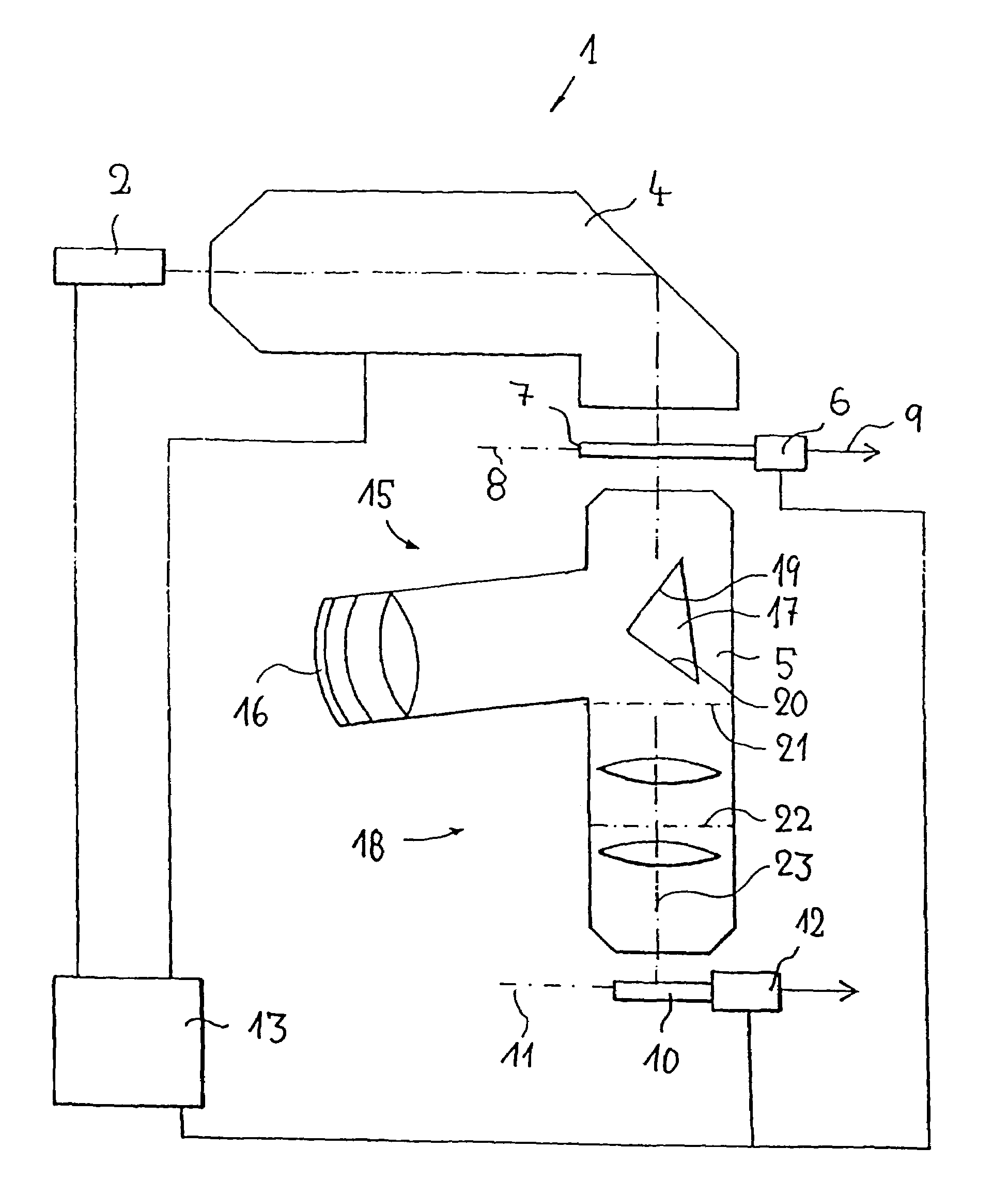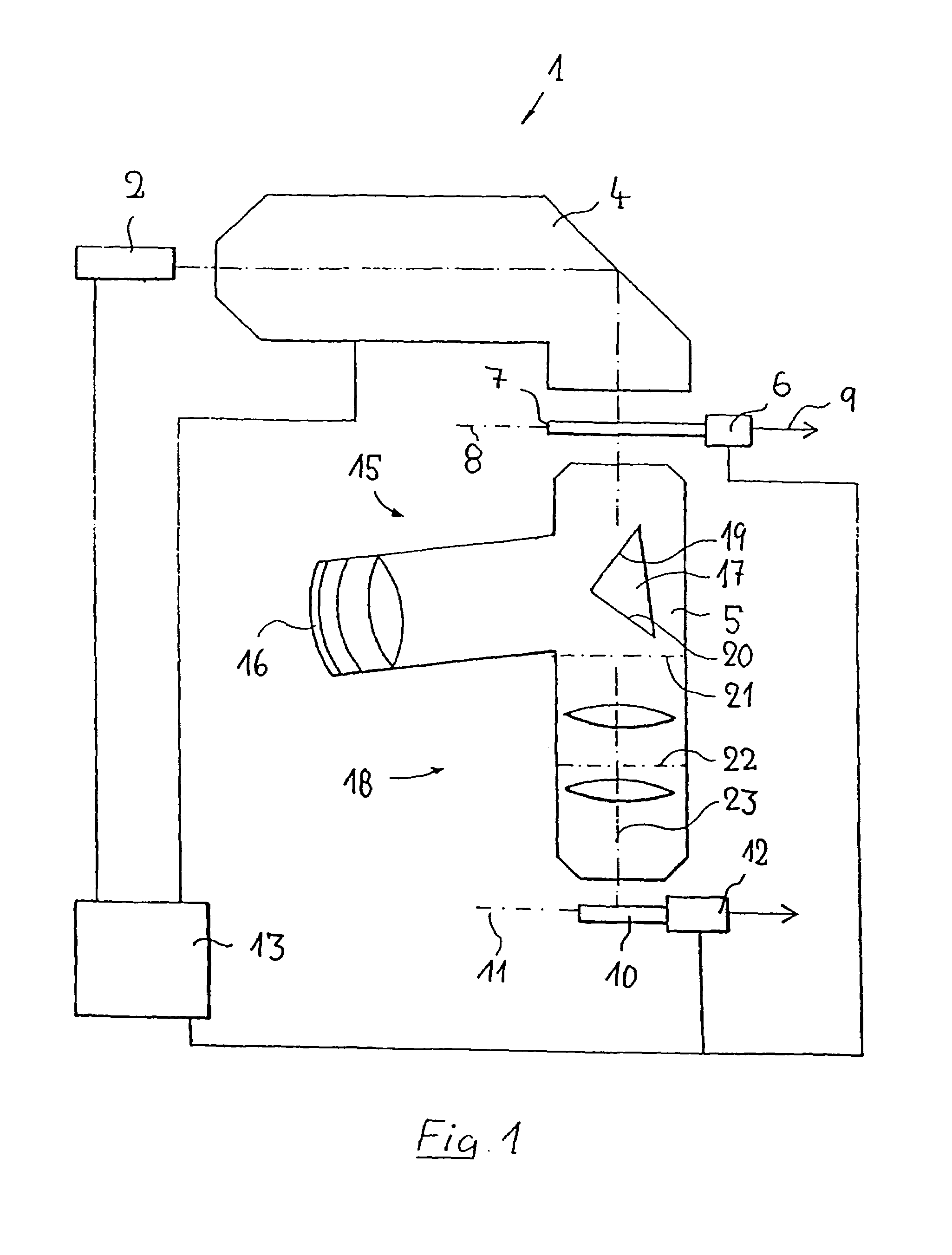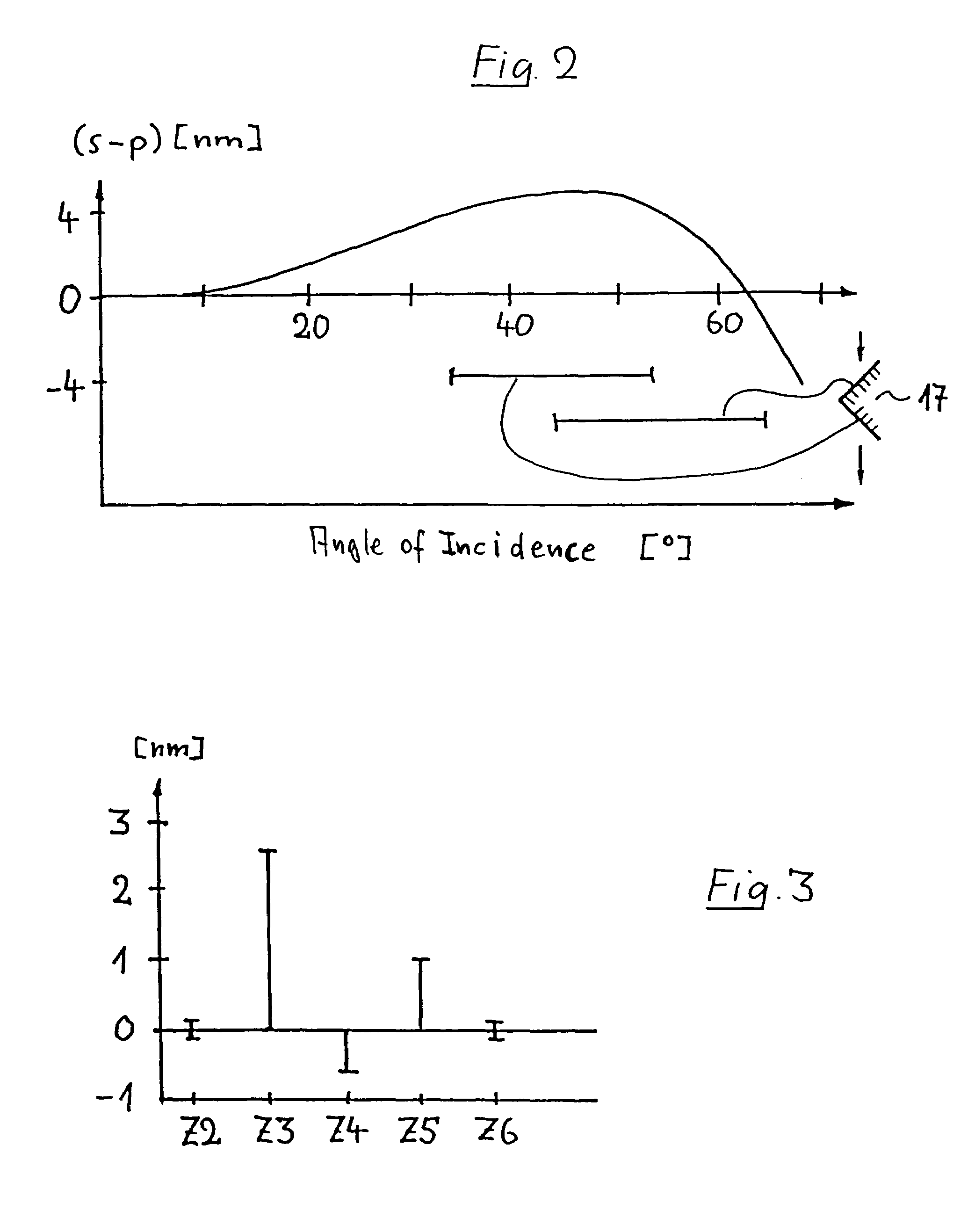Microlithographic illumination method and a projection lens for carrying out the method
a technology of projection lens and microlithography, which is applied in the direction of instruments, polarising elements, photomechanical apparatuses, etc., can solve the problems of difficult configuration of systems composed entirely of refractive components that have been sufficiently well-corrected for chromatic aberration, and material photoelastic effects
- Summary
- Abstract
- Description
- Claims
- Application Information
AI Technical Summary
Benefits of technology
Problems solved by technology
Method used
Image
Examples
Embodiment Construction
[0047]FIG. 1 schematically depicts a microlithographic projection illumination system 1 in the form of a wafer stepper employed for fabricating VLSI semiconductor de-vices. The projection illumination system includes an excimer laser 2 that serves as its light source. An illumination system 4 generates a large, sharply delimited, and highly uniformly illuminated image field that has been adapted to suit the telecentricity requirements of the projection lens 5 that follows it in the optical train. The illumination system 4 is equipped with means for selecting an illumination mode and is, for example, capable of being switched between conventional illumination with a variable degree of spatial coherence, annular illumination, and dipole or quadrupole illumination. The illumination system is followed by a device 6 for clamping and manipulating a reticle 7 that is arranged such that the reticle lies in the object plane 8 of the projection lens and may be translated along a direction of ...
PUM
| Property | Measurement | Unit |
|---|---|---|
| angle | aaaaa | aaaaa |
| angle | aaaaa | aaaaa |
| wavelengths | aaaaa | aaaaa |
Abstract
Description
Claims
Application Information
 Login to View More
Login to View More - R&D
- Intellectual Property
- Life Sciences
- Materials
- Tech Scout
- Unparalleled Data Quality
- Higher Quality Content
- 60% Fewer Hallucinations
Browse by: Latest US Patents, China's latest patents, Technical Efficacy Thesaurus, Application Domain, Technology Topic, Popular Technical Reports.
© 2025 PatSnap. All rights reserved.Legal|Privacy policy|Modern Slavery Act Transparency Statement|Sitemap|About US| Contact US: help@patsnap.com



